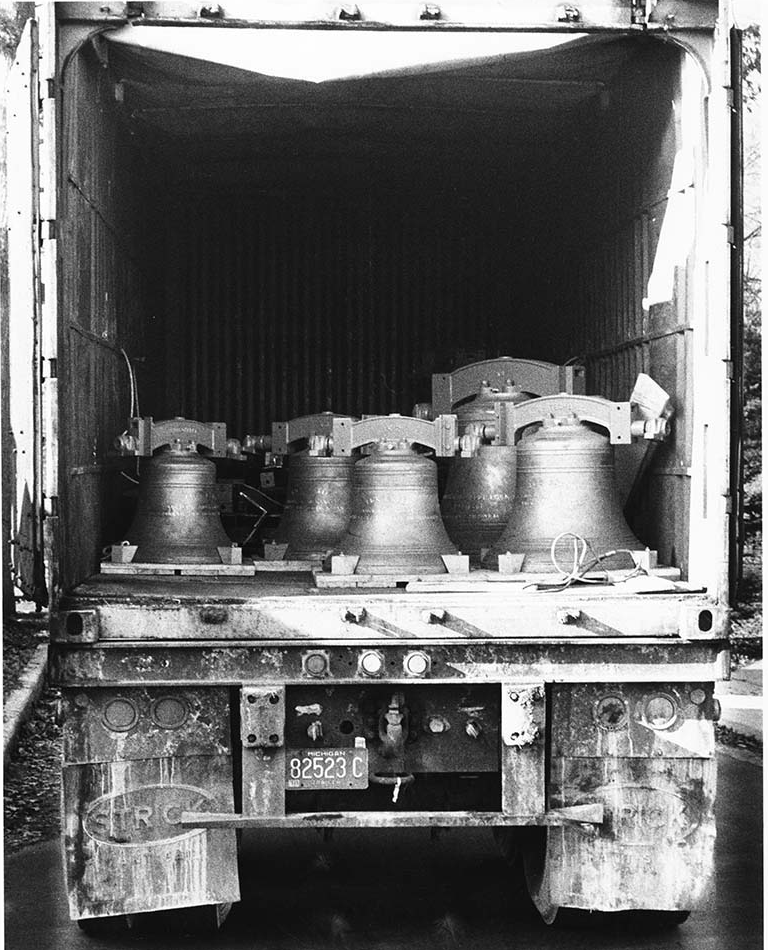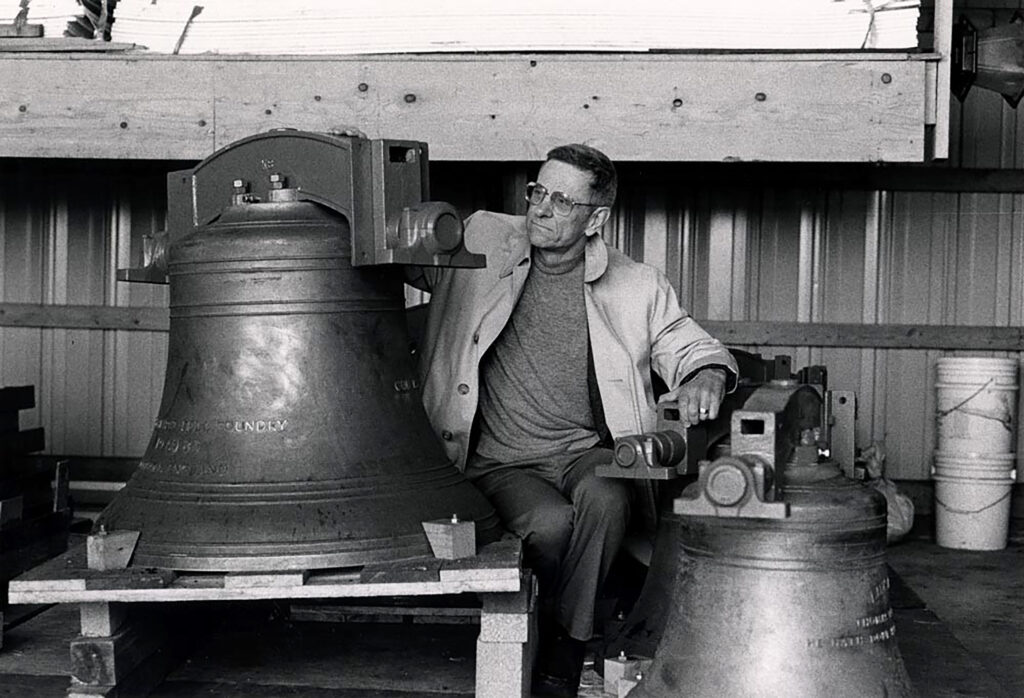Ring In Such Hope
By Sarah Frink
Last summer marked the 40th anniversary of the installation of Stetson Chapel’s tower bells—one of only a few dozen towers of its kind in North America. Each bell bears the College motto, lux esto, and each is inscribed with a Biblical quotation along with the name of a person associated with the College during its first century: Titus Bronson, Kalamazoo’s first permanent settler; College co-founders Thomas W. Merrill and Caleb Eldred; first College president James A.B. Stone and his wife, Lucinda Hinsdale Stone; founder of the First Baptist Church of Kalamazoo Jeremiah Hall; Madelon Stockwell, protégé of Lucinda Hinsdale Stone and the first woman graduate of the University of Michigan; and sixth College President Arthur Gaylord Slocum.

In anticipation of the arrival of the bells, eight sermons were delivered during services in Stetson Chapel in the winter quarter of 1984, each with a special focus on the bells and the founders for whom they were named.
Robert Dewey, then dean of the chapel, introduced the series with a theme of unity, noting that “each week we bring our separate selves and discover that we are one, a community. The bells are a metaphor of the community, which we both experience and seek.” Individuals come to the chapel “frequently uncertain and bewildered by chaotic times…The bells call us to remember a grace which we can share with others, a grace we discern at work in the broken world, creating and sustaining and redeeming that world.”
In a sermon delivered by Ian Buckner Oliver on January 27, 1984, he imagined the College’s first president, James Stone, at home, reflecting on the end of his tenure at the College, after trustees became disapproving of the Stones’ focus on coeducation and promotion of abolitionism: “From the safe and small truths of the church and revivalism” the Stones had come to know “a broad and inclusive truth” and “the College they had nurtured with their blood and all their work and all their money from the tiny Branch of the University to the now independent and chartered College, Female Department and Theological Seminary, had turned on them.” The Stones had resigned from the College. James Stone, a Baptist minister, was expelled from the church. History, of course, proved to be much kinder to the Stones, and today they are recognized as pioneers in education.
Oliver observed that one short motto was inscribed on James Stone’s bell: The light shines in the darkness. “But when you think of him,” Oliver said, “remember the next phrase of the Gospel, ‘… and the darkness has not overcome it.’ May we face that darkness, in ourselves, in our institution, and in our world, and not be overcome.”
He ended his sermon with a prayer that served to remind gatherers of any faith, or no religion at all, of hope in uncertain times:
Ring out indeed.
To place faith in objects such as
bells may be wrong,
but to place faith in history,
in symbol, and in hope,
is our task.
A College: its faith, its hope, its truth,
cannot be assumed,
but are recreated each day;
they are excited into life
by the Spirits of those unafraid
to learn, to love, to hope.
Ring in such hope, such love, such learning,
you metal monsters,
Remind us why we came.
Read more about the history of the chapel bells in our news story, After 40 Years, Change Ringing Remains as Sound as a Chapel Bell. If you have memories of the chapel bells or being a change ringer that you’d like to share, send them to info@kzoo.edu. We may share them in a later issue or K News story.
